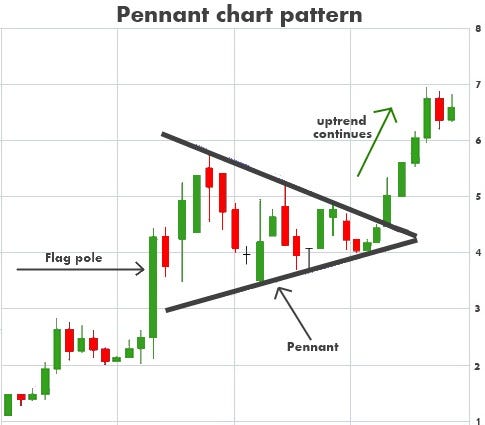20 Recommended Reasons For Deciding On AI Stock Trading Sites
20 Recommended Reasons For Deciding On AI Stock Trading Sites
Blog Article
Top 10 Tips For Assessing Market Coverage By Ai Stock Predicting/Analyzing Trading Platforms
Market coverage is among the most important aspects to take into consideration when looking at AI-powered trading platforms. This will determine how many markets and assets are accessible. Platforms with a broad market coverage let you diversify your options and discover global opportunities as well as adapt to a variety of trading strategies. These are the top ten tips to evaluate the market coverage of these platforms.
1. Evaluate Supported Asset Classes
Stocks: Make sure the platform covers major stock exchanges (e.g., NYSE, NASDAQ, LSE, HKEX) and also includes small-cap, large-cap and mid-cap stock.
ETFs Check whether the platform lets you select from a wide range of ETFs, which gives you an array of exposure.
Futures and options. Make sure the platform is compatible with derivatives like options, futures, and leveraged instruments.
Forex and commodities: Assess whether the platform has currency pairs and precious metals, energy commodities as well as agricultural commodities.
Cryptocurrencies: Verify if the platform is compatible with major cryptocurrencies, including Bitcoin and Ethereum as well as alternative currencies.
2. Check for Coverage Area
Global markets: Ensure the platform covers major global markets, which include North America, Europe, Asia-Pacific, and emerging markets.
Regional focus Make sure that the platform specializes on certain markets or regions that are in line with your interest in trading.
Local exchanges: Verify whether your platform is compatible with regional and local exchanges relevant to your business or your business plan.
3. Assessment Real-time as opposed to. Delayed Data
Real-time Data: Be sure that the platform provides real-time data for trading and for making timely decisions.
Delayed data: Find out if you can get delayed data for free or at a lower cost. This may be enough for investors who are looking to invest long-term.
Data latency: Determine if the platform minimizes latency for real-time data feeds especially for high-frequency trading.
4. Examine the historical data availability
The depth of historical data The platform offers extensive historical data that can be used for backtesting as well as analysis and testing (e.g. 10plus years).
Check the level of granularity in historical data.
Corporate actions - Check historical data to ensure that it reflects stock splits or dividends, as well as other corporate actions.
5. Check market depths and order books
Platforms should offer Level 2 Data (order-book depth) to enhance price detection and execution.
Check to see if your platform is showing live price spreads.
Volume data: Ensure that the platform has specific volume data that can be used to study market liquidity.
6. Examine the how much coverage is available for Indices & Sectors
Major indices - Make sure your platform supports major indices like the S&P 500 (e.g. NASDAQ 100 or FTSE 100), for benchmarking using indexes.
Information for specific industries: If you want to do a more targeted analysis, check if there is data available for specific sectors.
Customized indexes. Find out if the platform allows you to create and track custom indexes based on the criteria that you define.
7. Evaluate integration with News and Sentiment
News feeds: Ensure that the platform incorporates live news feeds of reputable sources (e.g., Bloomberg, Reuters) for events that affect the market.
Sentiment Analysis: Verify if the platform offers sentiment analysis tools based on news, social media or other sources of data.
Events-driven Strategies: Determine if the platform supports strategies that are driven by events (e.g. economic reports or earnings announcements).
8. Verify Multi-Market Trading Capabilities
Cross-market trading: Make sure that the platform supports trading across a variety of markets and asset classes through an interface.
Currency conversion: Verify that the platform supports multicurrency accounts as well as currency conversions for international trading.
Support for time zones: Check if your platform allows you to trade in multiple time zones.
9. Examine the coverage of alternative data Sources
Alternative data: To gain unique insights, check that your platform utilizes alternative data (e.g. satellite imagery, web traffic or credit card transactions).
ESG information: Find out if the platform has environmental, social and governance (ESG) information to support socially responsible investments.
Macroeconomic data: Check that the platform provides macroeconomic indicators that can be used to analyze fundamental issues (e.g. GDP, inflation rates, rate of interest).
Review Feedback from Customers and Market Reputation
User feedback is a great method of evaluating the market coverage of a platform.
Find out about the platform's industry reputation. This includes awards and recognition by experts in the area.
Find testimonials that prove the effectiveness of the platform in particular markets and asset classes.
Bonus Tips:
Trial period for free: Check the coverage in the marketplace of the platform and the quality of its data with the demo or trial for free.
API access: Verify that your platform's API is able to access market data programmatically to perform custom analyses.
Customer support: Ensure the platform has assistance for any market-related questions or data-related issues.
Following these tips can help you assess the market cover of AI stock-predicting/analyzing trading platforms. You will be able choose one that gives you access to market data and markets to ensure profitable trading. You can diversify your portfolio and make the most of new opportunities with the help of broad market coverage. Have a look at the best inciteai.com AI stock app for more info including ai investment stock, best ai stocks to invest in, ai stock market, best stocks to invest in, ai copyright trading, stock market ai, chart analysis ai, trading ai, stock analysis websites, ai trading bot and more.
Top 10 Tips For Evaluating The Regulatory Conformity Of Ai Stock Predicting/Analyzing Trading Platforms
The regulatory compliance of trading platforms that use AI to forecast or analyze the price of stocks is a significant aspect. Compliance ensures that the platform adheres to financial regulations, and is operating within legal frameworks, and safeguarding user information. This reduces the risk of financial penalties or legal issues. These are the top 10 suggestions for assessing compliance with regulatory requirements.
1. Verify the Licensing & Registration
Regulatory bodies: Ensure your platform is registered with and licensed by appropriate financial regulatory authorities (e.g., SEC in the U.S., FCA in the UK, ASIC in Australia).
Verify partnerships with brokers. If the platform incorporates brokers, make sure they are licensed and regulated.
Public records: Go to the official website of the regulator to verify the status of registration as well as previous violations.
2. Compliance with the Data Privacy Evaluation
GDPR If you're operating or serving users within the EU ensure that your platform is in compliance with the General Data Protection Regulation.
CCPA: California Consumer Privacy Act compliance is mandatory for all users.
Data handling policies: Check the data privacy policy of the platform to see how it describes the collection, storage, and sharing.
3. Examining Anti-Money-Laundering/AML Measures
AML policies: Make sure that your platform is armed with a solid AML policy to identify and prevent any money laundering.
KYC Procedures: Check if there are procedures on the platform for confirming the identities of its users.
Monitoring transactions: Find out whether the platform can monitor transactions and reporting suspicious activities to the relevant authorities.
4. Verify that you are in compliance with Trading Regulations
Market manipulation: Verify that the platform is equipped to avoid market manipulation like washing trading, spoofing.
Order types. Verify that the platform complies with the regulations pertaining to order types (e.g. there's no stop loss hunting that is illegal).
Best execution: Check if the platform adheres to the best execution practices, making sure that trades are executed at most competitive price.
5. Cybersecurity Compliance:
Data encryption. Make sure your platform has encryption of user data both in transit and at rest.
Incident response: Verify that the platform has an incident response plan in place to deal with cyber-attacks or data breaches.
Certifications: Determine if a platform has been accredited to be secure (e.g. ISO 27001, SOC 2)
6. Evaluate Transparency and disclosure
Disclosure of fees: Ensure that the platform is transparent about all fees, including any hidden or additional fees.
Risk disclosure: Ensure that the platform discloses all risks, particularly in the case of high-risk strategies or trading using leverage.
Performance reporting: Ensure that the AI platform is transparent and provides precise performance data to its AI model.
7. Verify that you are in compliance with International Regulations
Transborder trade If you plan to trade internationally, make sure the platform complies with all applicable laws.
Tax reporting: Check if the platform provides tools or reports that can help users comply with tax regulations (e.g., FIFO rules in the U.S.).
Compliance with international sanctions: Ensure that the platform adheres strictly to these and doesn't allow trading with prohibited entities or countries.
8. Examine the records-keeping and audit trail
Transaction records: For compliance and auditing purposes, ensure that the platform has detailed logs of all transactions.
User activity logs - Make sure that the platform records every user's activity, including logins to the platform, trades executed, and any changes to your account settings.
Audit-readiness: Check if the platform will be able to produce all required documents and logs to support the possibility of a regulatory audit.
9. Assess compliance with AI-Specific Regulations
Algorithmic Trading Rules: If your platform supports algorithmic trading, ensure it complies with regulations such as MiFID II (in Europe) or Reg SCI (in the U.S.).
Fairness and bias Check whether the platform reduces or checks its AI models to ensure fair and ethical trading.
Explainability: Some regulations require that platforms explain AI-driven predictions or choices.
Examine the User Feedback and Regulatory Histories
User reviews: Study reviews from users to assess the platform's reputation for regulatory compliance.
Regulatory history: Verify whether any violations of the regulations were committed, and also fines and penalties.
Third-party checks: Ensure that the platform is in compliance with the regulations by determining whether it has regular audits by third parties.
Bonus Tips
Legal consultation: Speak with a lawyer to ensure the platform is in compliance with all applicable regulations.
Trial period: Try the platform free of charge or use the demo to check its compliance features and documentation.
Support for customers: Make sure the platform provides support for compliance-related questions or concerns.
With these guidelines you can identify the level of compliance with regulations within AI stock trading platforms. This will enable you to select a platform that is operating within the legal framework that protects your interest. Compliance does more than lower legal risks, but also improves confidence with the platform. See the recommended her comment is here on best stock analysis website for more advice including ai trading app, best stocks to invest in, trading ai bot, best ai copyright to buy, trade ai, ai day trading, stock analysis websites, ai investing, investment ai, best ai stocks to buy now and more.